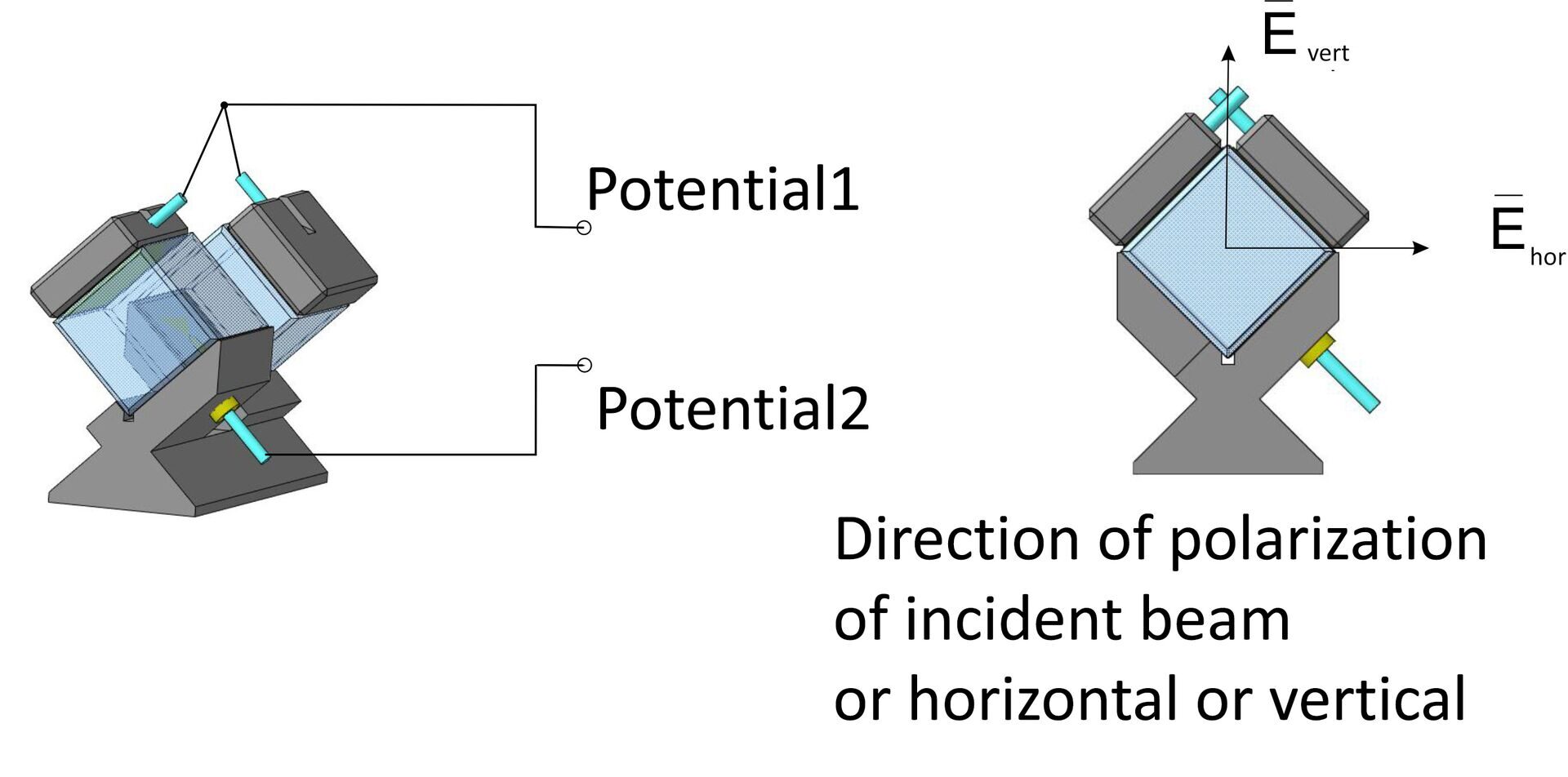Pockels Cells
KTP
EO KTP crystals used for electro-optical applications. This cells have quite outstanding characteristics compared to other types of cells.
This type of cell is used in lasers for medical, industrial and scientific applications.
Electro-optical cell KTP EO are assembled as a thermally compensated two-crystal configuration, in which two crystals rotated 90 degrees relative to each other are placed on the line of the propagation axis (along X or Y). The electrodes are applied on the surfaces. For Q-swiched application in resonator it is more expedient to use the "voltage on" scheme. Or lock the resonator while pumping with high voltage and then open the resonator at zero potential. We guarantee stable operation with frequencies above 10Hz and by supplying a high-voltage signal with a duty cycle of no more than 10%.
Standard manufactured models have a crystals size such as 4x4x10, 6x6x10, 8x8x10mm, which corresponds to a light aperture of 3.2 5.2 7.2mm in diameter and a half-wave voltage of 1600, 2400, 3200V.
It is possible to manufacture cells with dimensions of customer.
Advantages of KTP EO as electro-optical cell:
- low half-wave voltage
- compact design, easy placement, non-hygroscopic
- continuous operation in the service temperature control unit (from -50°С to +70°С)
- high laser damage threshold (> 600MW/cm2, at 1064 nm, 10ns pulse)
- stable operation in the wide frequency range from 1 Hz to 1 MHz
- small piezoelectric ringing
- low absorption loss at 1064 nm (about 100-150 ppm)
LiNbO3
Advantages of LiNbO3 as electro-optical cell:
- common type of Pockels cell it can produce many manufacturers
-
high reliability
It is possible to make anti-reflective coatings.
It is possible to manufacture a case for Pockels cell crystal.
It is possible to manufacture a case for Pockels cell crystal.



